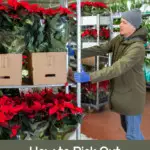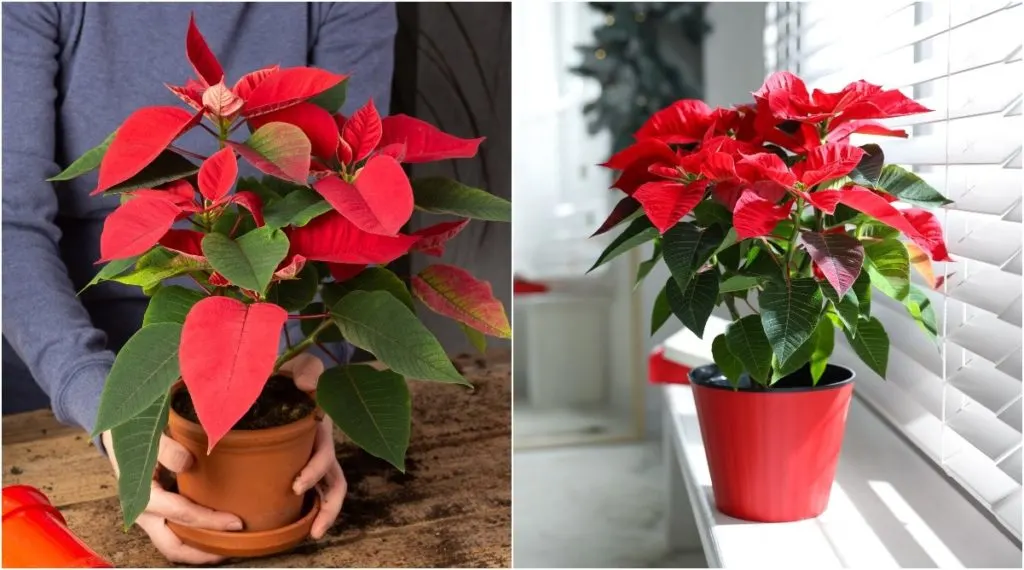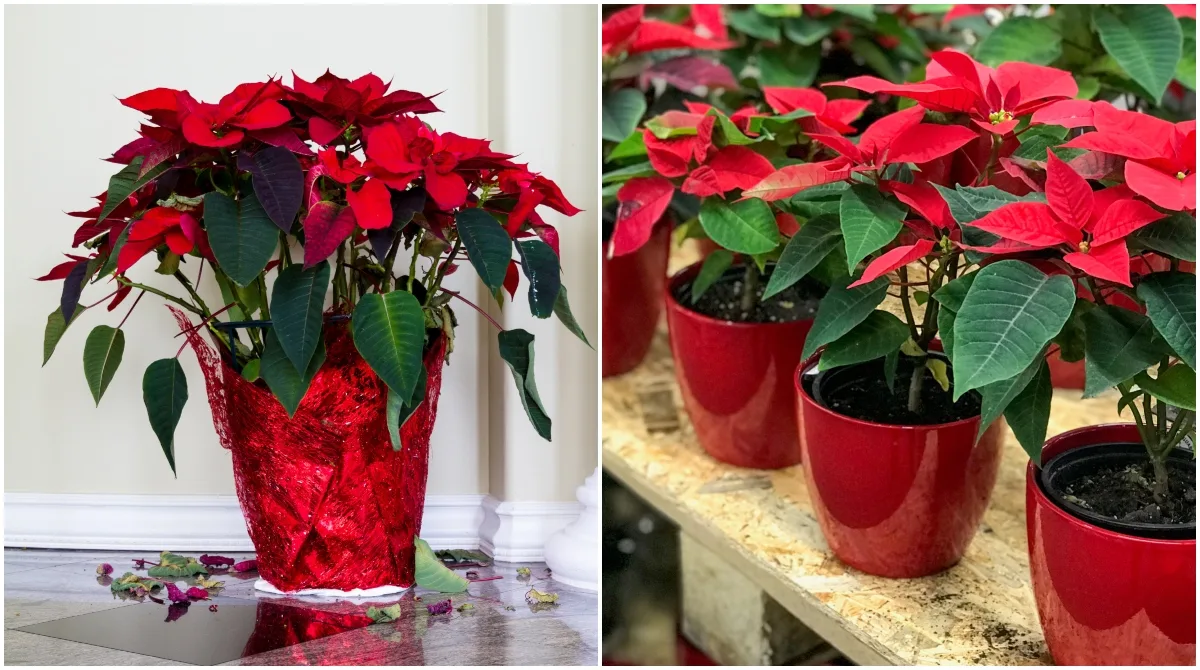
Right about now, there are boxes of poinsettias being loaded into the back of trucks, which will make their way to a store near you. Whether or not you end up with a beautiful plant that will last until the New Year depends a great deal on what happens when it reaches its destination.
You wouldn’t believe how often stores bungle the handling of poinsettias, from the way they’re unpacked to where they’re displayed and cared for in the store.
For an easy-to-care-for plant, it’s amazing how many retailers get it dead wrong.
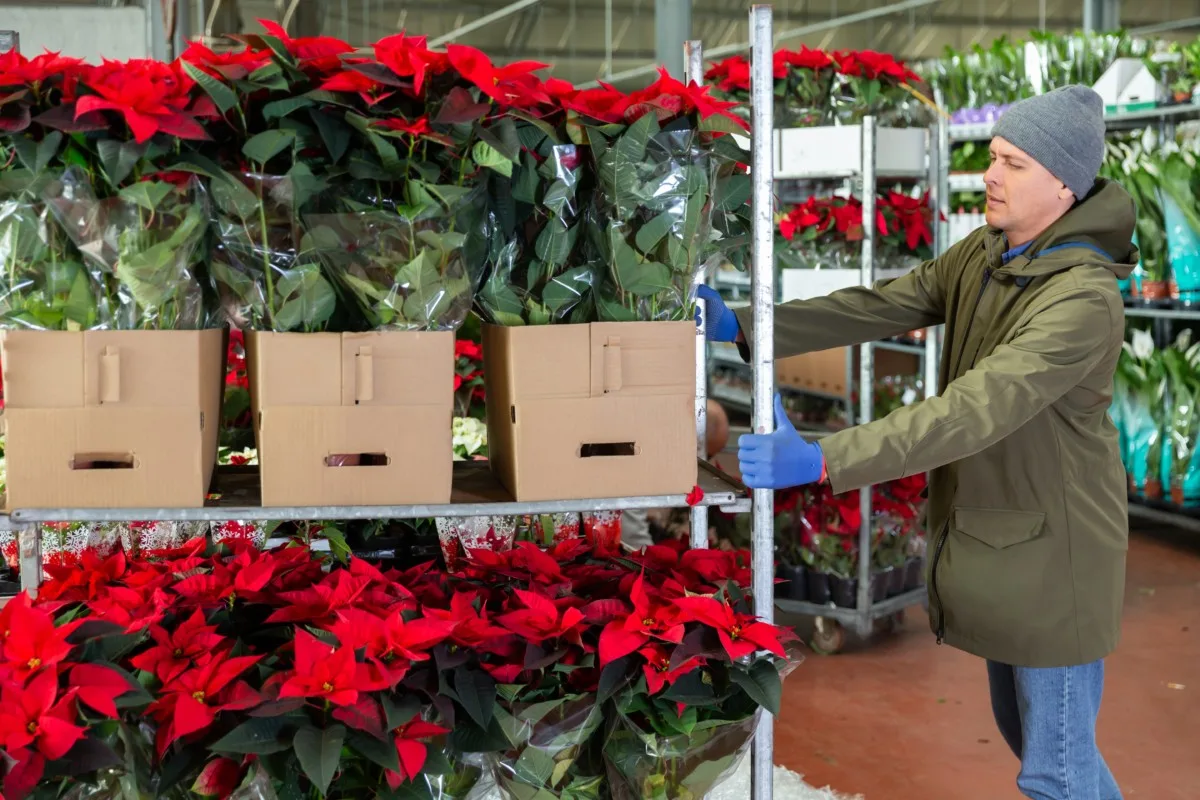
As in, your poinsettia will probably be dead before Santa is eating cookies in your living room in the middle of the night.
This holiday season, let’s look at the Dos and Don’ts of retail poinsettias. Knowing how they’re supposed to be handled can give us obvious clues they haven’t been cared for properly. Ultimately, this can help you pick a healthy plant from the unhealthy ones.
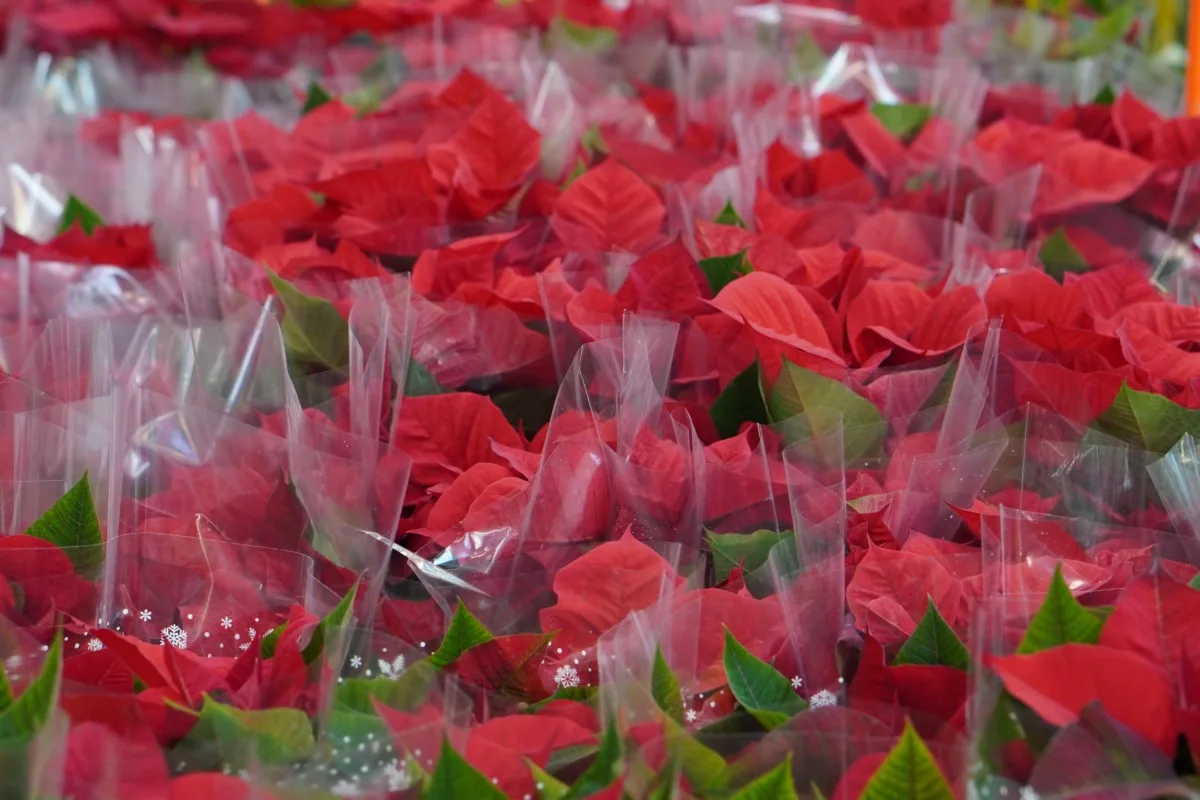
1. What Does a Poinsettia Have in Common with a Banana?
No, it’s not the opening line of a bad joke.
One of the first things that usually go wrong for this year’s batch of poinsettias happens when they reach the store. As I mentioned above, they’re shipped packed in cardboard boxes. The boxes protect the delicate leaves during transit and also give a measure of protection from the cold.
It’s important that the plants are unpacked as soon as they arrive at the store.
Yeah, guess how often that happens.
Just like bananas, poinsettia release ethylene gas. Ethylene is an important plant hormone released throughout the growing cycle of poinsettia and controls things like when the bracts turn red and when the plant drops its leaves for the season.
If the plants aren’t unpacked right away, levels of ethylene gas can quickly reach a point where it will suffocate the plant. Opening up the boxes quickly is even more important if the plants had to travel a great distance to the store.
Much like those bananas that went from green to spotted in a matter of days, ethylene can drastically shorten the life of a poinsettia’s colorful display.
Unfortunately, once the plant is exposed to too much ethylene, that’s it for this season. There’s no bouncing back. If you bring one of these poinsettia home, you can expect a quick decline.
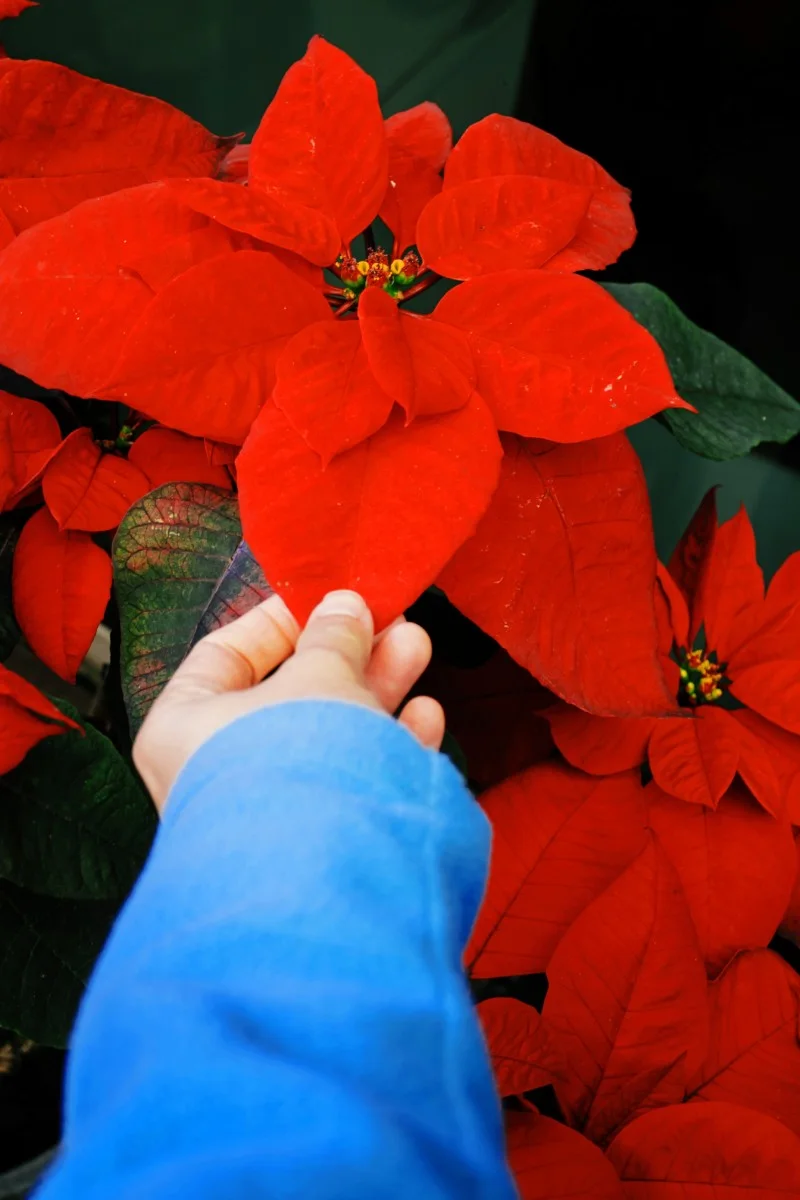
What to Look For:
Suffocated plants look droopy and may already be losing their leaves. Skip these plants, especially if it’s early in the holiday season and they’re just hitting the stores. Pay special attention to the bracts (the colored leaves) and look for curling, limpness or dropped leaves. If you purchase a poinsettia where they wrap it up for you, be sure to unwrap it as soon as you get it home.
2. Hey, Let’s Put a Tropical Plant by the Door in December!
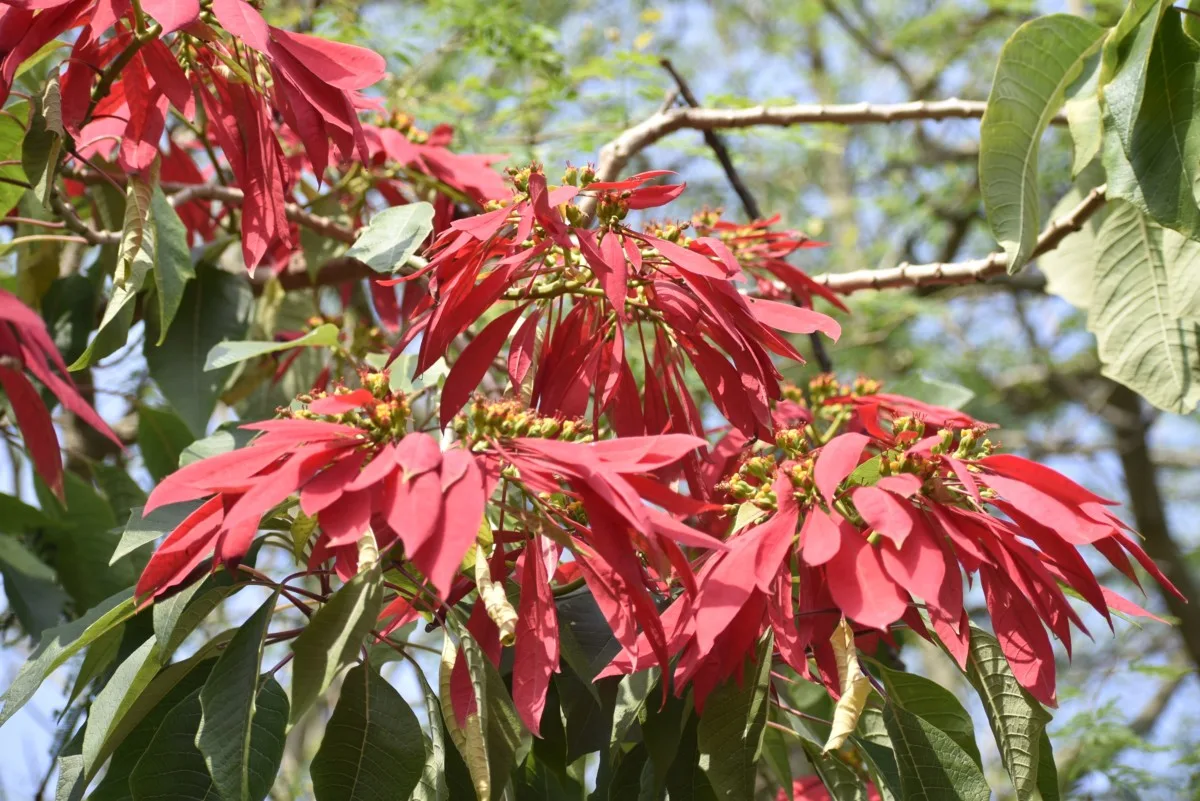
Most retailers treat poinsettias as impulse buys. You’re more likely to buy them if they’re right there when you walk in. It’s so easy to pop one or two $6 plants in your cart on your way into the store, especially if you weren’t planning on buying a poinsettia in the first place.
This is why we’re greeted by a bright display of red and green poinsettia when we walk into a store from mid-November right up to Christmas.
It’s a little less cheery when you know these poor plants are shivering in their nursery pots by the door, and it won’t be long before they decide to give up for the season and drop all their leaves.
Poinsettias are tropical plants and do not tolerate cold well at all. They prefer consistent temperatures between 65-75 degrees, and evening temperatures shouldn’t dip below 60. Placing them in a drafty entryway is one of the quickest ways to knock them out for the season. But hey, we’re just here to make a quick holiday buck.
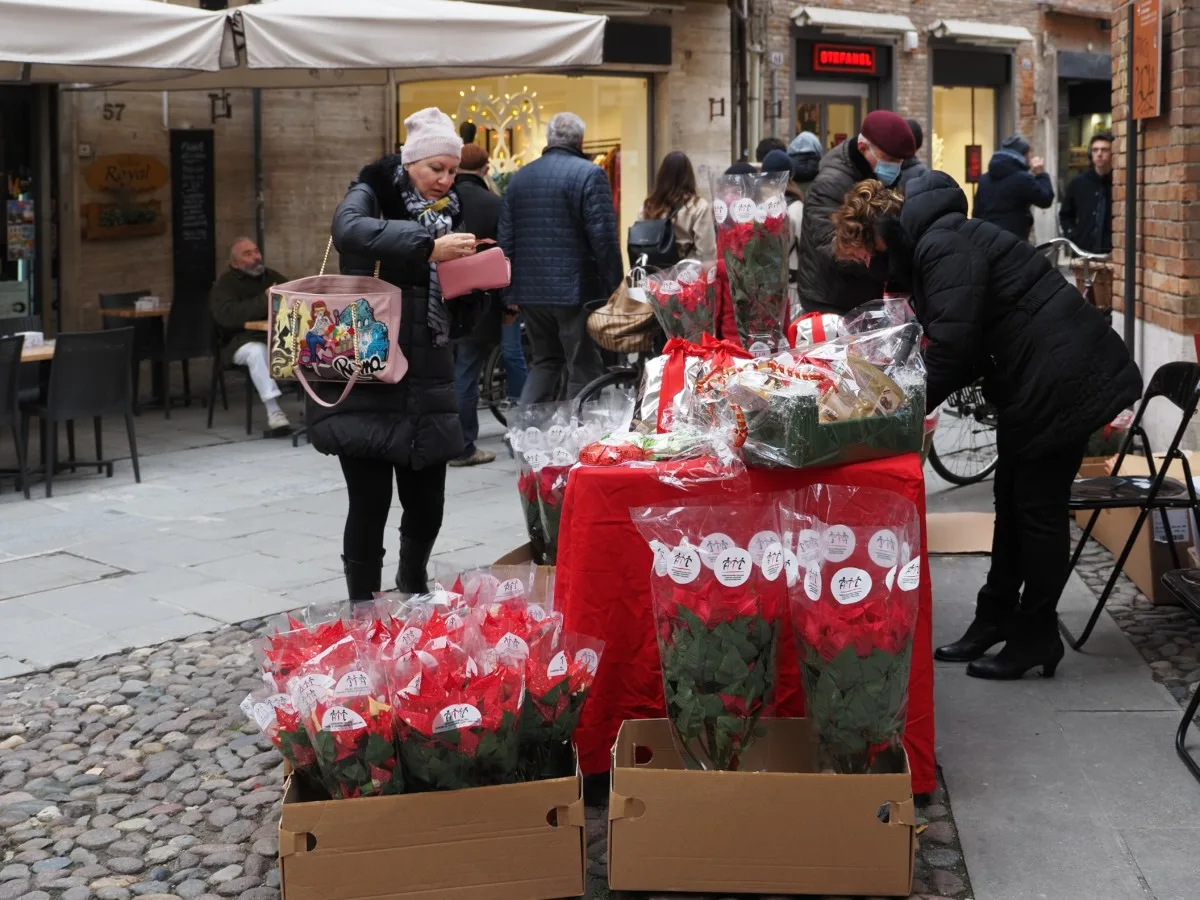
What to Look For:
Purchase your poinsettia from a store that doesn’t keep them right at the front door. Hint – it’s not Walmart. You’ll have much better luck getting a plant that will last if it’s displayed somewhere in the store away from drafts.
3. It’s a Plant. Just Water It, Right?
In general, most big box retailers don’t feel the need to train their personnel on the care and feeding of a seasonal (and often disposable) plant that’s only in the store for about six weeks. Of course, this leads to poinsettias facing one of two watering fates.
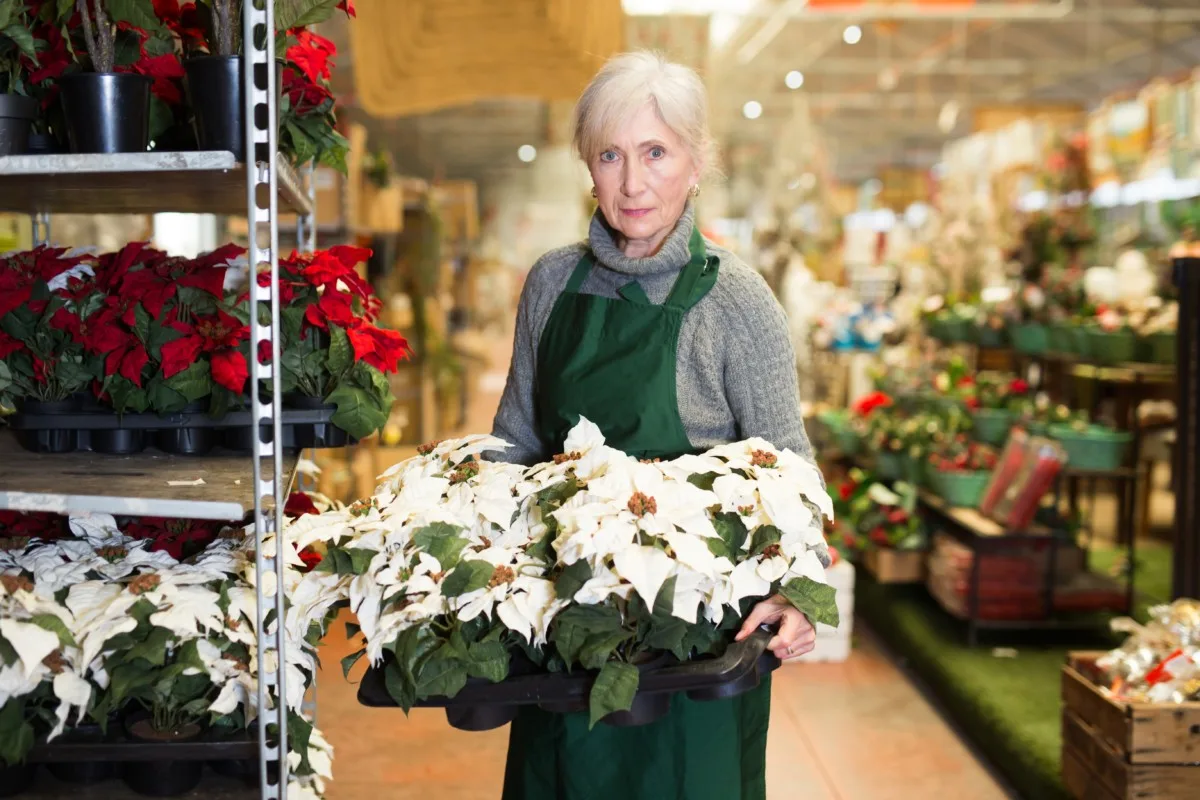
Underwatered
We all know the holidays are a busy time, especially for those poor souls working retail this time of year. Let’s take a moment to remind ourselves to be extra patient and kind to retail workers this time of year. Anyway, getting back to underwatered poinsettia.
It’s not uncommon for poinsettia to be underwatered once they hit the shelves. The plants usually move fast and end up in someone’s home before they even need to be watered. But as we get closer to Christmas and poinsettia sales slow a bit, the plants are on display longer; it’s easy to overlook their watering needs.
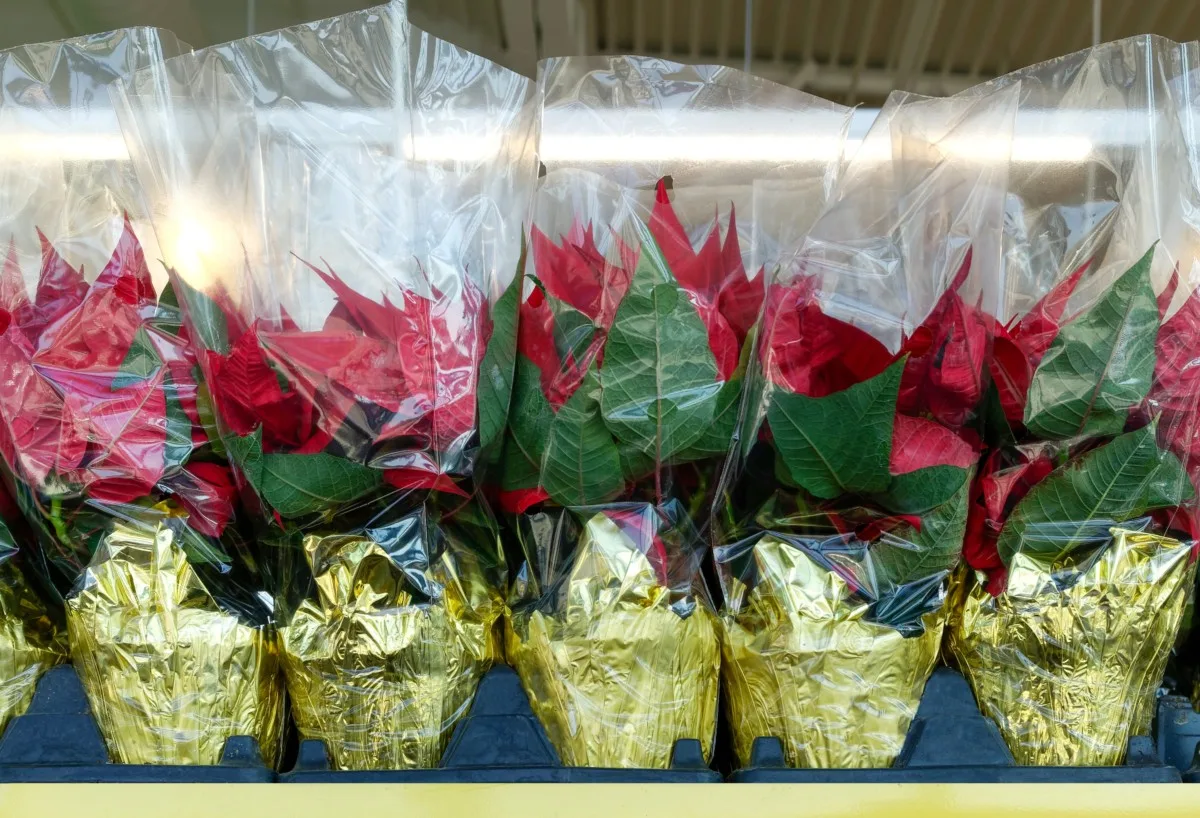
Soggy Bottom Poinsettias
Poinsettias do not like wet feet. They’re quite susceptible to root rot. This is easy enough for you to prevent when you get them home. However, poinsettias come with a foil or plastic sleeve covering the nursery pot. While this protects the store floor and furniture, it’s not so great for proper drainage.
The plants end up being watered haphazardly and sit with water in the bottom of the sleeve for days. Root rot easily develops in these conditions leading to a shortened holiday season for your poinsettia or killing the plant outright.
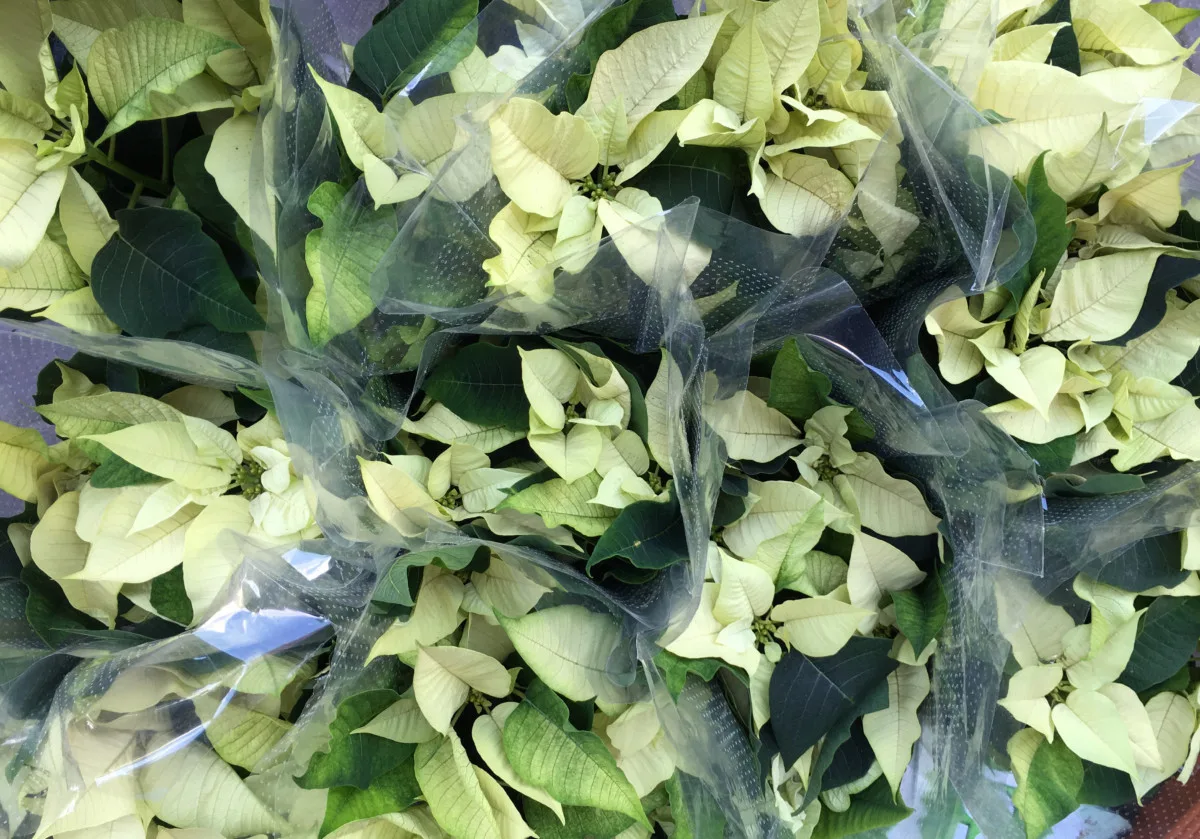
What to Look For:
It’s easier to correct an underwatered poinsettia than one that’s too soggy. Stick your finger in the soil; if the top inch of the soil is dry, you can water it once you get it home. But watch out for plants with soil that’s completely dry.
Pick up the plant and pull the pot out of the sleeve; if there’s water sitting in the bottom, choose another plant. Look at the plant’s leaves; if they are yellowing around the tips or edges, it has probably been sitting in water.
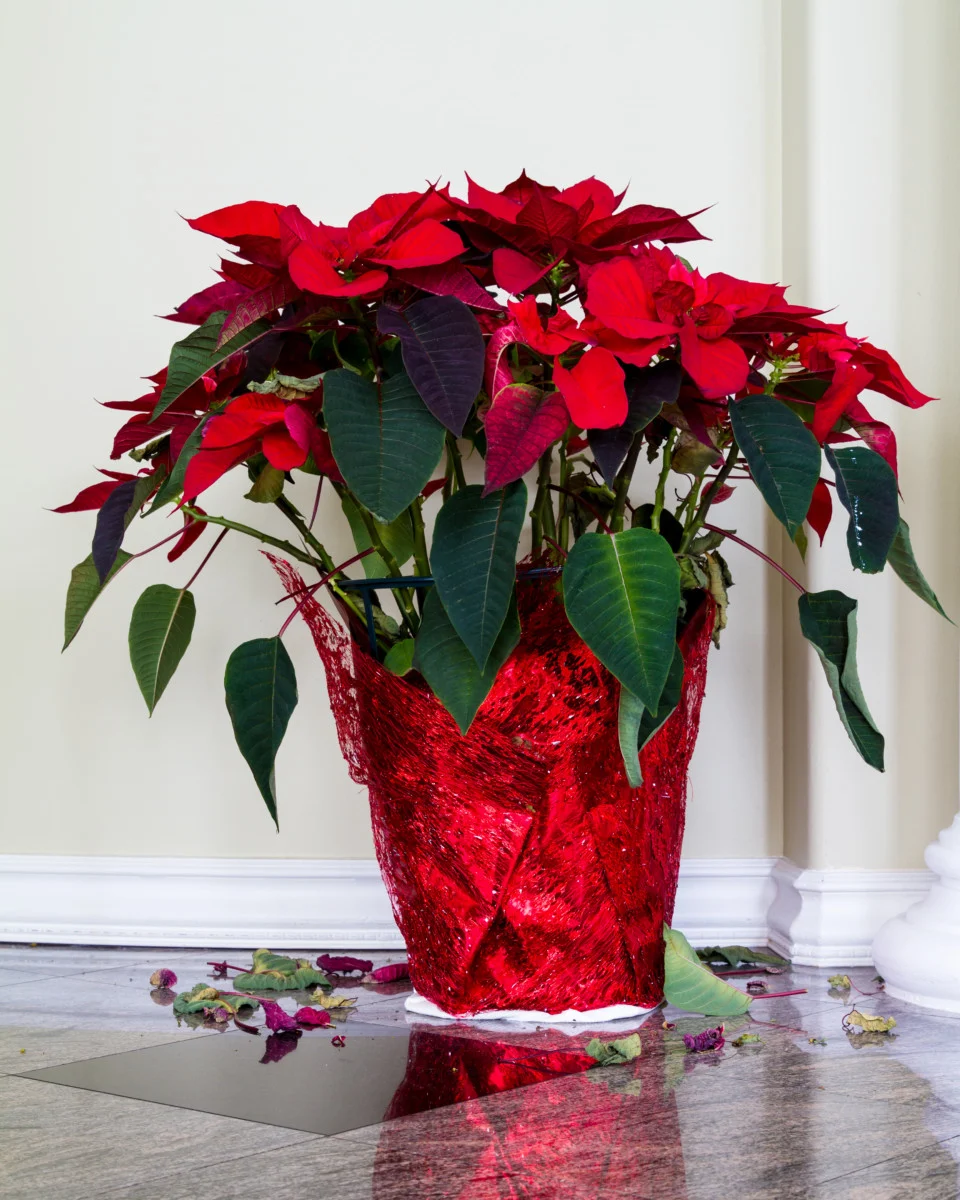
Buy a Poinsettia from Plant People
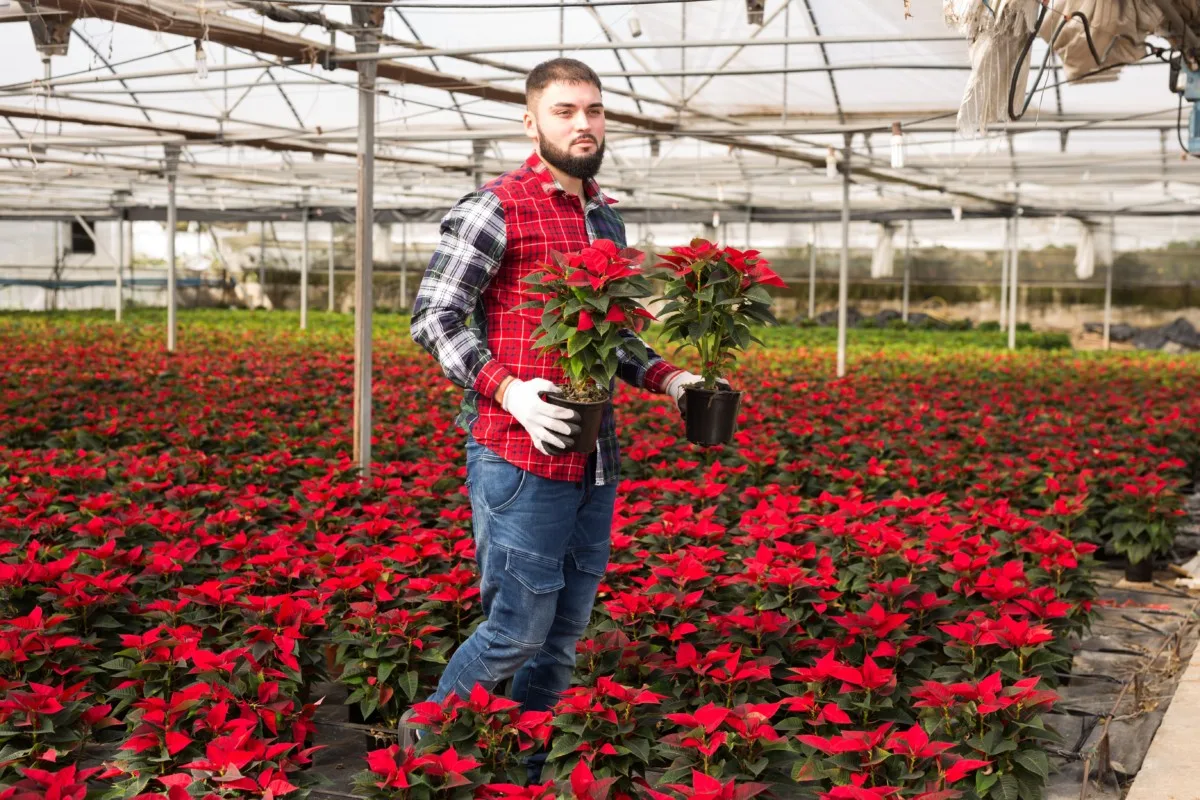
You often run into these problems when buying plants from your average big box store, the grocery store or a hardware store. And if a poinsettia is truly an impulse buy, it may not make a difference to you.
But if you want a poinsettia that’s going to last or you’re purchasing one as a gift, then it makes sense to buy them somewhere other than the big box store that just wants to move a seasonal item. In that case, look for holiday poinsettias from a local garden center or reputable nursery.
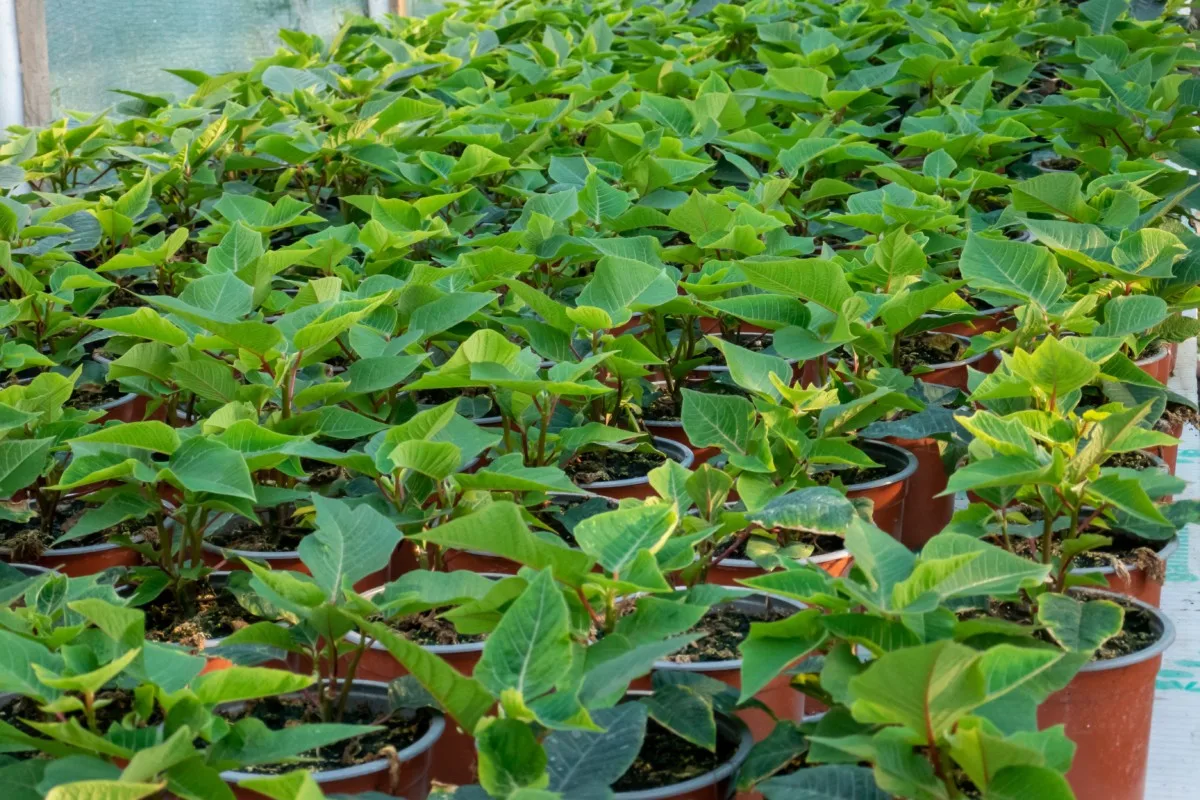
Not only do these folks know what they’re doing, you’re more likely to walk out with a healthy plant that will last you for years to come. They will also wrap it up for you to protect it for the chilly ride home. Plus, it’s one more way to ‘shop small’ during the holidays.
In the end, even if your poinsettia drops its leaves early, all is not lost. You can easily tuck it out of sight for the season and let it go dormant. They are quite easy to keep growing year after year. You can even propagate your poinsettia if you want. Then next Christmas, you can cut out the irresponsible middleman.
Read Next:

Get the famous Rural Sprout newsletter delivered to your inbox.
Including Sunday musings from our editor, Tracey, as well as “What’s Up Wednesday” our roundup of what’s in season and new article updates and alerts.


